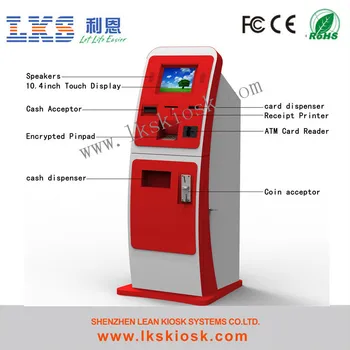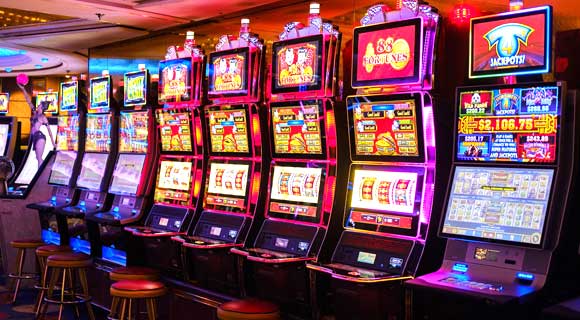Betting Machine
Introduction to Wisconsin Slot Machine Casino Gambling in 2020
If you want to play slot machines in America, there’s nowhere quite like Las Vegas. Home to some of the biggest and best casinos in the world, let alone in the United States, Las Vegas is virtually synonymous with gambling. And yet, many players who finally make it out to Vegas are overwhelmed by the sheer number of machines. A fixed odds betting terminal (FOBT, sometimes pronounced 'fob-tee') is a type of electronic slot machine normally found in betting shops in the United Kingdom and introduced in 2001. The terminals allow players to bet on the outcome of various games and events which have fixed odds, with the theoretical percentage return to player (RTP.
Wisconsin slot machine casino gambling consists of 24 tribal casinos. Illegal video gambling machines exist in bars and taverns throughout Wisconsin.
Tribal-state gaming compacts have minimum and maximum theoretical payout limits. Annual return statistics are publicly available for all tribal casinos.
This post continues my weekly State-By-State Slot Machine Casino Gambling Series, an online resource dedicated to guiding slot machine casino gambler to success. Now in its third year, each weekly post reviews slots gambling in a single U.S. state, territory, or federal district.
Keep Reading … or Watch Instead!
Or … Listen Instead!
Find my podcast wherever you listen to audio!
Relevant Legal Statutes on Gambling in Wisconsin*
The minimum legal gambling age in Wisconsin depends upon the gambling activity:
- Land-Based Casinos: 21
- Poker Rooms: 18
- Bingo: 18
- Lottery: 18
- Pari-Mutuel Wagering: 18
Horse Betting Machine
Tribal casinos in Wisconsin have negotiated tribal-state gaming compacts. However, each city or county must agree to both the development of a local tribal casino as well as the games offered at its site.
Further, many bars and taverns in Wisconsin have illegal video gaming machines. Having up to five machines results in civil forfeiture without legal repercussion while more than five machines are, instead, a criminal offense.
Anyone playing pay-to-play, bar-based slot machines must be at least 21. Otherwise, owners break a different law, this one having severe legal consequences for their business.
Electronic gaming machines in bars and taverns which are free to play with no prizes of any value are not illegal under Wisconsin’s gaming regulations.
*The purpose of this section is to inform the public of state gambling laws and how the laws might apply to various forms of gaming. It is not legal advice.
Slot Machine Private Ownership in Wisconsin
It is legal to own a slot machine privately in Wisconsin if it is 25 years old or older.
Gaming Control Board in Wisconsin
Wisconsin’s Gaming Division has gaming regulatory responsibilities including:
- Licensing procedures
- Background investigations
- Regulatory enforcement activities

The Division’s area of focus for tribal gaming is the Office of Indian Gaming and Regulatory Compliance created by tribal-state gaming compacts. The Office’s purpose is to ensure regulation of Class III games at casinos operated by Wisconsin’s eleven tribes.
Casinos in Wisconsin
There are 24 American Indian tribal casinos in Wisconsin.
The largest casino in Wisconsin is Potawatomi Hotel & Casino with over 2,500 slot machines.
The second-largest casino is Ho-Chunk Gaming Wisconsin Dells with 2,200 slot machines.
Commercial Casinos in Wisconsin
There are no commercial casinos in Wisconsin.
Tribal Casinos in Wisconsin
There are 24 tribal casinos in Wisconsin:

- Bad River Lodge Casino in Odanah, 45 miles east of Duluth.
- Grindstone Creek Casino in Hayward, 140 miles northeast of Minneapolis.
- Ho-Chunk Gaming Black River Falls, 110 miles northwest of Madison.
- Ho-Chunk Gaming Nekoosa, 50 miles north of Wausau.
- Ho-Chunk Gaming Tomah, 81 miles north of Madison.
- Ho-Chunk Gaming Wisconsin Dells in Baraboo, 40 miles northwest of Madison.
- Ho-Chunk Gaming Wittenberg, 30 miles east of Wausau.
- Lake of the Torches Resort Casino in Lac du Flambeau, 225 miles north of Green Bay.
- Legendary Waters Resort & Casino in Red Cliff, 80 miles east of Duluth, Minnesota.
- Menominee Casino Resort in Keshena, 40 miles northwest of Green Bay.
- Mole Lake Casino & Lodge in Mole Lake, 100 miles northwest of Green Bay.
- North Star Mohican Casino Resort in Bowler, 55 miles northwest of Green Bay.
- Oneida Casino – Irene Moore Activity Center (IMAC) in Green Bay.
- Oneida Casino – Main-Airport in Green Bay.
- Oneida Casino – One-Stop Packerland in Green Bay.
- Oneida Casino – Travel Center in Pulaski, 12 northwest of Green Bay.
- Oneida Casino – W. Mason in Green Bay.
- Potawatomi Hotel & Casino in Milwaukee
- Potawatomi Carter Casino Hotel in Wabeno, 85 miles north of Green Bay.
- Sevenwinds Casino, Lodge & Convention Center in Hayward, 75 miles southeast of Duluth, Minnesota.
- St. Croix Casino – Danbury, 62 miles south of Duluth near the border to Minnesota
- St. Croix Casino – Hertel in Webster, 83 miles south of Duluth near the border to Minnesota.
- St. Croix Casino – Turtle Lake, 76 miles northeast of Minneapolis near the border to Minnesota.
Other Gambling Establishments
As an alternative to enjoying Wisconsin slot machine casino gambling, consider exploring casino options in a nearby state. Bordering Wisconsin is:

- North: Michigan Slots
- East: Lake Michigan
- South: Illinois Slots
- West: Iowa Slots and Minnesota Slots
Each of the links above will take you to my blog for that neighboring U.S. state to Wisconsin.
Our Wisconsin Slots Facebook Group
Are you interested in sharing and learning with other slots enthusiasts in Wisconsin? If so, join our Wisconsin slots community on Facebook. All you’ll need is a Facebook profile to join this closed Facebook Group freely.
There, you’ll be able to privately share your slots experiences as well as chat with players about slots gambling in Wisconsin. Join us!
Payout Returns in Wisconsin
Written into Wisconsin’s tribal-state gaming compacts are minimum and maximum theoretical payout limits. These limits apply over the expected lifetime of the game.
Each tribal-state compact has set minimum and maximum payout limits. However, there are two sets of limits, both of which apply over the expected lifetime of the game:
- Games-of-chance (slot machines): 80% and 100%
- Games-of-skill video games (poker, blackjack, etc.): 83% and 103%
For each machine, tribal casinos report to the state both its theoretical payout and actual return statistics. However, this valuable information is not available to the public.
An annual return statistic is publicly available for all tribal casinos combined in Wisconsin, although casino hold% comes from dividing Tribal Net Win by Handle Data. Player win% is from subtracting hold% from 100%.
In 2019, the most recent year available, the annual return statistic was 92.76%. This player win% is up from 2017’s 92.48% and 2018’s 92.61%.
Summary of Wisconsin Slot Machine Casino Gambling in 2020
Wisconsin slot machine casino gambling consists of 24 tribal casinos. Illegal gaming machines exist at many bars and taverns, but only five or more machines results in a criminal offense.
Tribal-state gaming compacts have established two sets of theoretical payout limits, including minimum and maximums. For games-of-chance such as slot machines, these limits are 80% and 100%. The 2019 return statistic was 92.76%.
Annual Progress in Wisconsin Slot Machine Casino Gambling
In the last year, there has been no significant changes to the slots gaming industry in Wisconsin.
Related Articles from Professor Slots
Other State-By-State Articles from Professor Slots
- Previous: West Virginia Slot Machine Casino Gambling
- Next: Wyoming Slot Machine Casino Gambling
Have fun, be safe, and make good choices!
By Jon H. Friedl, Jr. Ph.D., President
Jon Friedl, LLC
The gaming industry is big business in the U.S., contributing an estimated US$240 billion to the economy each year, while generating $38 billion in tax revenues and supporting 17 million jobs.
What people may not realize is that slot machines, video poker machines and other electronic gaming devices make up the bulk of all that economic activity. At casinos in Iowa and South Dakota, for example, such devices have contributed up to 89 percent of annual gaming revenue.
Spinning-reel slots in particular are profit juggernauts for most casinos, outperforming table games like blackjack, video poker machines and other forms of gambling.
What about slot machines makes them such reliable money makers? In part, it has something to do with casinos’ ability to hide their true price from even the savviest of gamblers.
Sports Betting Machines
The price of a slot
An important economic theory holds that when the price of something goes up, demand for it tends to fall.
But that depends on price transparency, which exists for most of the day-to-day purchases we make. That is, other than visits to the doctor’s office and possibly the auto mechanic, we know the price of most products and services before we decide to pay for them.
Slots may be even worse than the doctor’s office, in that most of us will never know the true price of our wagers. Which means the law of supply and demand breaks down.
Casino operators usually think of price in terms of what is known as the average or expected house advantage on each bet placed by players. Basically, it’s the long-term edge that is built into the game. For an individual player, his or her limited interaction with the game will result in a “price” that looks a lot different.
For example, consider a game with a 10 percent house advantage – which is fairly typical. This means that over the long run, the game will return 10 percent of all wagers it accepts to the casino that owns it. So if it accepts $1 million in wagers over 2 million spins, it would be expected to pay out $900,000, resulting in a casino gain of $100,000. Thus from the management’s perspective, the “price” it charges is the 10 percent it expects to collect from gamblers over time.
Individual players, however, will likely define price as the cost of the spin. For example, if a player bets $1, spins the reels and receives no payout, that’ll be the price – not 10 cents.
So who is correct? Both, in a way. While the game has certainly collected $1 from the player, management knows that eventually 90 cents of that will be dispensed to other players.
A player could never know this, however, given he will only be playing for an hour or two, during which he may hope a large payout will make up for his many losses and then some. And at this rate of play it could take years of playing a single slot machine for the casino’s long-term advantage to become evident.
Short-term vs. long-term
This difference in price perspective is rooted in the gap between the short-term view of the players and the long-term view of management. This is one of the lessons I’ve learned in my more than three decades in the gambling industry analyzing the performance of casino games and as a researcher studying them.
Let’s consider George, who just got his paycheck and heads to the casino with $80 to spend over an hour on a Tuesday night. There are basically three outcomes: He loses everything, hits a considerable jackpot and wins big, or makes or loses a little but manages to walk away before the odds turn decidedly against him.
Of course, the first outcome is far more common than the other two – it has to be for the casino to maintain its house advantage. The funds to pay big jackpots come from frequent losers (who get wiped out). Without all these losers, there can be no big winners – which is why so many people play in the first place.
Specifically, the sum of all the individual losses is used to fund the big jackpots. Therefore, to provide enticing jackpots, many players must lose all of their Tuesday night bankroll.


What is less obvious to many is that the long-term experience rarely occurs at the player level. That is, players rarely lose their $80 in a uniform manner (that is, a rate of 10 percent per spin). If this were the typical slot experience, it would be predictably disappointing. But it would make it very easy for a player to identify the price he’s paying.
Raising the price
Betting Machine
Ultimately, the casino is selling excitement, which is comprised of hope and variance. Even though a slot may have a modest house advantage from management’s perspective, such as 4 percent, it can and often does win all of George’s Tuesday night bankroll in short order.
This is primarily due to the variance in the slot machine’s pay table – which lists all the winning symbol combinations and the number of credits awarded for each one. While the pay table is visible to the player, the probability of producing each winning symbol combination remains hidden. Of course, these probabilities are a critical determinant of the house advantage – that is, the long-term price of the wager.
This rare ability to hide the price of a good or service offers an opportunity for casino management to raise the price without notifying the players – if they can get away with it.
Gambling Systems That Work
Casino managers are under tremendous pressure to maximize their all-important slot revenue, but they do not want to kill the golden goose by raising the “price” too much. If players are able to detect these concealed price increases simply by playing the games, then they may choose to play at another casino.
This terrifies casino operators, as it is difficult and expensive to recover from perceptions of a high-priced slot product.
Getting away with it
Consequently, many operators resist increasing the house advantages of their slot machines, believing that players can detect these price shocks.
Our new research, however, has found that increases in the casino advantage have produced significant gains in revenue with no signs of detection even by savvy players. In multiple comparisons of two otherwise identical reel games, the high-priced games produced significantly greater revenue for the casino. These findings were confirmed in a second study.
Further analysis revealed no evidence of play migration from the high-priced games, despite the fact their low-priced counterparts were located a mere 3 feet away.
Importantly, these results occurred in spite of the egregious economic disincentive to play the high-priced games. That is, the visible pay tables were identical on both the high- and low-priced games, within each of the two-game pairings. The only difference was the concealed probabilities of each payout.
Betting Machines Uk
Armed with this knowledge, management may be more willing to increase prices. And for price-sensitive gamblers, reel slot machines may become something to avoid.